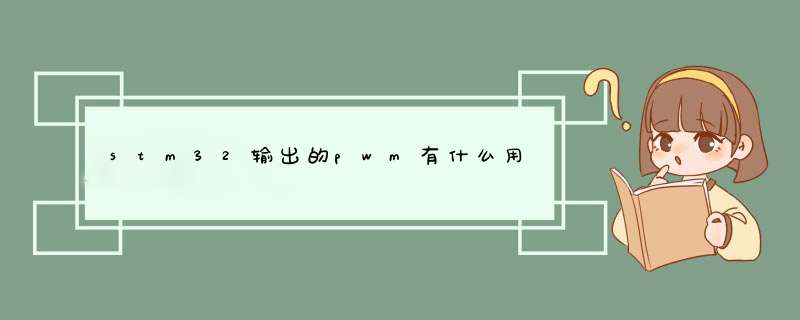
TIM_TimeBaseInitTypeDef TIM_TimeBaseStructure
TIM_OCInitTypeDef TIM_OCInitStructure
uint16_t TimerPeriod = 0
uint16_t Channel1Pulse = 0, Channel2Pulse = 0, Channel3Pulse = 0, Channel4Pulse = 0
int main(void)
{
/* System Clocks Configuration */
RCC_Configuration()
/* GPIO Configuration */
GPIO_Configuration()
/* TIM1 Configuration ---------------------------------------------------
Generate 7 PWM signals with 4 different duty cycles:
TIM1CLK = SystemCoreClock, Prescaler = 0, TIM1 counter clock = SystemCoreClock
SystemCoreClock is set to 72 MHz for Low-density, Medium-density, High-density
and Connectivity line devices and to 24 MHz for Low-Density Value line and
Medium-Density Value line devices
The objective is to generate 7 PWM signal at 17.57 KHz:
- TIM1_Period = (SystemCoreClock / 17570) - 1
The channel 1 and channel 1N duty cycle is set to 50%
The channel 2 and channel 2N duty cycle is set to 37.5%
The channel 3 and channel 3N duty cycle is set to 25%
The channel 4 duty cycle is set to 12.5%
The Timer pulse is calculated as follows:
- ChannelxPulse = DutyCycle * (TIM1_Period - 1) / 100
----------------------------------------------------------------------- */
/* Compute the value to be set in ARR regiter to generate signal frequency at 17.57 Khz */
TimerPeriod = (SystemCoreClock / 17570 ) - 1
/* Compute CCR1 value to generate a duty cycle at 50% for channel 1 and 1N */
Channel1Pulse = (uint16_t) (((uint32_t) 5 * (TimerPeriod - 1)) / 10)
/* Compute CCR2 value to generate a duty cycle at 37.5% for channel 2 and 2N */
Channel2Pulse = (uint16_t) (((uint32_t) 375 * (TimerPeriod - 1)) / 1000)
/* Compute CCR3 value to generate a duty cycle at 25% for channel 3 and 3N */
Channel3Pulse = (uint16_t) (((uint32_t) 25 * (TimerPeriod - 1)) / 100)
/* Compute CCR4 value to generate a duty cycle at 12.5% for channel 4 */
Channel4Pulse = (uint16_t) (((uint32_t) 125 * (TimerPeriod- 1)) / 1000)
/* Time Base configuration */
TIM_TimeBaseStructure.TIM_Prescaler = 0
TIM_TimeBaseStructure.TIM_CounterMode = TIM_CounterMode_Up
TIM_TimeBaseStructure.TIM_Period = TimerPeriod
TIM_TimeBaseStructure.TIM_ClockDivision = 0
TIM_TimeBaseStructure.TIM_RepetitionCounter = 0
TIM_TimeBaseInit(TIM1, &TIM_TimeBaseStructure)
/* Channel 1, 2,3 and 4 Configuration in PWM mode */
TIM_OCInitStructure.TIM_OCMode = TIM_OCMode_PWM2
TIM_OCInitStructure.TIM_OutputState = TIM_OutputState_Enable
TIM_OCInitStructure.TIM_OutputNState = TIM_OutputNState_Enable
TIM_OCInitStructure.TIM_Pulse = Channel1Pulse
TIM_OCInitStructure.TIM_OCPolarity = TIM_OCPolarity_Low
TIM_OCInitStructure.TIM_OCNPolarity = TIM_OCNPolarity_High
TIM_OCInitStructure.TIM_OCIdleState = TIM_OCIdleState_Set
TIM_OCInitStructure.TIM_OCNIdleState = TIM_OCIdleState_Reset
TIM_OC1Init(TIM1, &TIM_OCInitStructure)
TIM_OCInitStructure.TIM_Pulse = Channel2Pulse
TIM_OC2Init(TIM1, &TIM_OCInitStructure)
TIM_OCInitStructure.TIM_Pulse = Channel3Pulse
TIM_OC3Init(TIM1, &TIM_OCInitStructure)
TIM_OCInitStructure.TIM_Pulse = Channel4Pulse
TIM_OC4Init(TIM1, &TIM_OCInitStructure)
/* TIM1 counter enable */
TIM_Cmd(TIM1, ENABLE)
/* TIM1 Main Output Enable */
TIM_CtrlPWMOutputs(TIM1, ENABLE)
while (1)
{}
}
/**
* @brief Configures the different system clocks.
* @param None
* @retval None
*/
void RCC_Configuration(void)
{
/* TIM1, GPIOA, GPIOB, GPIOE and AFIO clocks enable */
RCC_APB2PeriphClockCmd(RCC_APB2Periph_TIM1 | RCC_APB2Periph_GPIOA | RCC_APB2Periph_GPIOE|
RCC_APB2Periph_GPIOB |RCC_APB2Periph_AFIO, ENABLE)
}
/**
* @brief Configure the TIM1 Pins.
* @param None
* @retval None
*/
void GPIO_Configuration(void)
{
GPIO_InitTypeDef GPIO_InitStructure
#ifdef STM32F10X_CL
/* GPIOE Configuration: Channel 1/1N, 2/2N, 3/3N and 4 as alternate function push-pull */
GPIO_InitStructure.GPIO_Pin = GPIO_Pin_9|GPIO_Pin_11|GPIO_Pin_13|GPIO_Pin_14|
GPIO_Pin_8|GPIO_Pin_10|GPIO_Pin_12
GPIO_InitStructure.GPIO_Mode = GPIO_Mode_AF_PP
GPIO_InitStructure.GPIO_Speed = GPIO_Speed_50MHz
GPIO_Init(GPIOE, &GPIO_InitStructure)
/* TIM1 Full remapping pins */
GPIO_PinRemapConfig(GPIO_FullRemap_TIM1, ENABLE)
#else
/* GPIOA Configuration: Channel 1, 2 and 3 as alternate function push-pull */
GPIO_InitStructure.GPIO_Pin = GPIO_Pin_8 | GPIO_Pin_9 | GPIO_Pin_10 | GPIO_Pin_11
GPIO_InitStructure.GPIO_Mode = GPIO_Mode_AF_PP
GPIO_InitStructure.GPIO_Speed = GPIO_Speed_50MHz
GPIO_Init(GPIOA, &GPIO_InitStructure)
/* GPIOB Configuration: Channel 1N, 2N and 3N as alternate function push-pull */
GPIO_InitStructure.GPIO_Pin = GPIO_Pin_13 | GPIO_Pin_14 | GPIO_Pin_15
GPIO_Init(GPIOB, &GPIO_InitStructure)
#endif
}
可以的, 定时器PWM模式可以输出nS级别的PWM波形,软件IO输出只能到达us级。STM32F4_TIM输出PWM波形(可调频率、占空比):
http://blog.csdn.net/ybhuangfugui/article/details/51867044
欢迎分享,转载请注明来源:夏雨云

 微信扫一扫
微信扫一扫
 支付宝扫一扫
支付宝扫一扫
评论列表(0条)